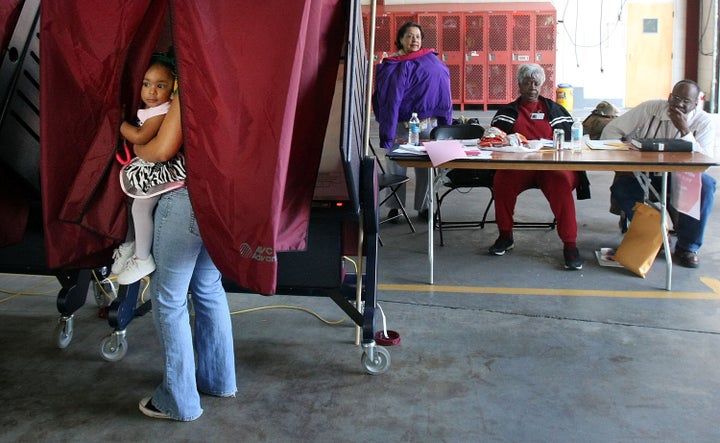
Over six years ago, Nathaniel Stinnett set out to rally an “ after last year’s redistricting.
“Nebraska is this really interesting place where harnessing the power of the state’s environmental electorate could yield big policy wins from the local level all the way up to the White House,” Stinnett said.
The organization already operates in Alaska, Arizona, Colorado, Florida, Georgia, Iowa, Kansas, Maine, Massachusetts, Nevada, New Hampshire, New Mexico, New York, North Carolina, Pennsylvania, Texas and Virginia.
Advertisement
Since President Joe Biden signed the biggest climate-spending packages in history into law last year, regulators at state energy offices, municipal utilities and local planning boards will determine how and where the funding goes.
“Local governments get pretty wide discretionary authority on how to spend it, and there’s a lot of implementation work that needs to be done, ” said Caroline Spears, executive director of the nonprofit Climate Cabinet, which funds candidates for down-ballot regulatory seats who pledge to prioritize serious decarbonization. “It’s really important that we have great climate champions in office in those state legislatures, public service commission, utility boards and public power districts.”
Stinnett’s group uses consumer data and public election files to identify and target registered voters who care deeply about environmental issues but don’t usually cast ballots. The Environmental Voter Project then blasts those voters with traditional get-out-the-vote methods: phone calls, door-knocking by canvassers, mailers and digital advertisements.
“These are the people who are experiencing the worst of the fossil fuel industry. These are the people who have to live with toxic air and poisoned water every day.”
– Nathaniel Stinnett, Environmental Voter Project
The name of the group aside, the outreach messaging rarely mentions the environment. Instead, the Environmental Voter Project goes for good old-fashioned peer pressure, guilting nonvoters for their failure to exercise their rights or participate in elections in which their neighbors voted.
Advertisement
Stinnett’s files updated through 2021 show 1,030,000 of the voters his group has contacted were now “such consistent voters they voted in the most recent federal, state and local elections,” he said. “They have become super voters.”
It’s unlikely that the Environmental Voter Project can claim credit for activating all of those voters. But the organization has run randomized control trials on individual elections to study its own direct impact.
In Pennsylvania in 2020, one such study showed the group increased turnout among its targeted voters by 1.2 percentage points.
“1.2 is a big number in this business,” Stinnett said. “Ask Donald Trump how big a deal 1.2 is in Pennsylvania.”
In the U.S. Senate runoff in Georgia that determined which party held the upper chamber that year, the Environmental Voter Project spent $550,000 — a small sliver of the $1 billion pie spent on the special election — yet charted a nearly 1 percentage point increase in turnout.
Advertisement
Last year, the nonprofit’s efforts boosted turnout in the Alaska special election where Democrat Rep. Mary Peltola defeated former Gov. Sarah Palin by nearly 4 percentage points.

Chip Somodevilla via Getty Images
“It’s easier to increase turnout when baseline turnout is lower,” Stinnett said. “In lower-turnout elections where there is also less money being spent, we often get better results.”
Another finding from the past six years of shepherding climate-conscious citizens to the polls: “These environment-first registered voters are disproportionately people of color.”
That dynamic was “particularly stark in Louisiana,” Stinnett said.
The state’s vote files show there are about twice as many white registered voters (63%) as Black ones (31%). Among the low-propensity environmental voters Stinnett’s group has identified, 59% are Black and just 33% are white.
Advertisement
“It is abundantly clear that those seldom-voting and nonvoting Black environmentalists are in Cancer Alley,” Stinnett said. “These are the people who are experiencing the worst of the fossil fuel industry. These are the people who have to live with toxic air and poisoned water every day.”
In a December runoff election that the Environmental Voter Project played no part in, activist Davante Lewis defeated incumbent Lambert Boissiere, a conservative Democrat from a dynastic political family whom advocates accused of corruption. Spears, whose group backed Lewis, said his unlikely victory was a sign the climate movement can “push things forward” — and called Stinnett’s plans to expand the Environmental Voter Project into Louisiana and Nebraska “fundamentally really exciting.”
Stinnett said the benefits of his strategy have a longer horizon than just one election.
“The environmental movement has an enormous amount of latent political power here,” he said. “It is at once a tragedy and an opportunity.”
